Intro
Identify Cannabis Use Disorder signs, symptoms, and effects, including addiction, dependence, and withdrawal, to understand this mental health condition and seek treatment for marijuana use disorders and substance abuse.
The increasing legalization and social acceptance of cannabis have led to a rise in its use, and subsequently, a growing concern about cannabis use disorder. This condition, also known as cannabis addiction, affects millions of people worldwide, causing significant distress and impairment in daily life. Recognizing the signs of cannabis use disorder is crucial for early intervention, treatment, and support. In this article, we will delve into the world of cannabis use disorder, exploring its definition, causes, symptoms, and treatment options.
Cannabis use has become more prevalent, especially among young adults, with many considering it a harmless substance. However, for some individuals, frequent and heavy use can lead to dependence and addiction. Cannabis use disorder is a recognized medical condition, characterized by the inability to stop or reduce cannabis use despite the negative consequences it may have on one's life. The signs of cannabis use disorder can be subtle, making it essential to understand the warning signals and seek help when needed.
The complexity of cannabis use disorder lies in its ability to affect individuals differently, depending on various factors such as the frequency and amount of use, the method of consumption, and the person's overall health and mental state. As cannabis use becomes more widespread, it is vital to address the potential risks and consequences associated with its use. By understanding the signs of cannabis use disorder, we can work towards preventing its onset, supporting those affected, and promoting a healthier relationship with cannabis.
Cannabis Use Disorder Definition and Causes
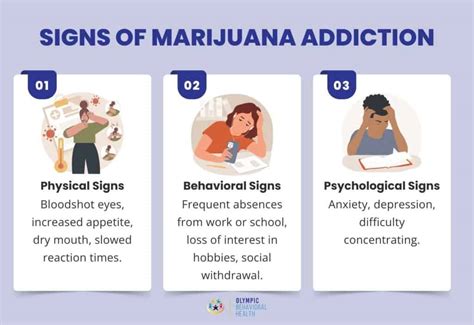
The causes of cannabis use disorder are multifaceted, involving a combination of biological, psychological, and environmental factors. Genetic predisposition, brain chemistry, and mental health conditions can contribute to the development of cannabis use disorder. Additionally, social and environmental factors, such as peer pressure, stress, and easy access to cannabis, can also play a significant role.
Cannabis Use Disorder Signs and Symptoms
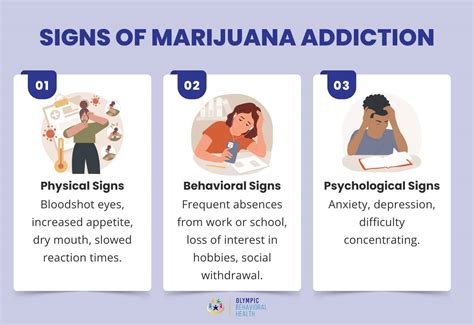
Other signs of cannabis use disorder may include changes in behavior, such as neglecting personal hygiene, relationships, or work responsibilities, increased irritability, anxiety, or paranoia, and decreased motivation or interest in activities once enjoyed. Physical symptoms can also occur, including bloodshot eyes, dry mouth, and increased heart rate.
Cannabis Use Disorder Stages
The progression of cannabis use disorder can be divided into several stages, including experimentation, regular use, abuse, and addiction. Understanding these stages can help identify the signs of cannabis use disorder and provide early intervention.- Experimentation: This stage involves trying cannabis for the first time, often due to curiosity or peer pressure.
- Regular use: As cannabis use becomes more frequent, individuals may start to experience tolerance and dependence.
- Abuse: At this stage, cannabis use begins to interfere with daily life, causing problems with relationships, work, or school.
- Addiction: The final stage is characterized by the inability to stop or reduce cannabis use despite the negative consequences.
Cannabis Use Disorder Diagnosis and Treatment
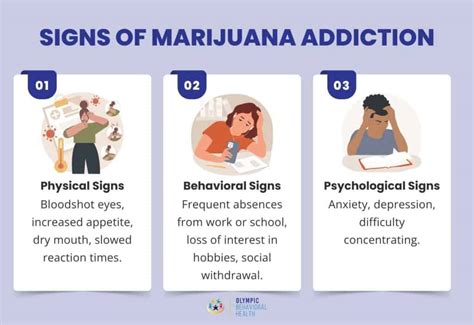
Behavioral therapies can help individuals identify and change negative thought patterns and behaviors associated with cannabis use, while medications can aid in managing withdrawal symptoms and cravings. Support groups, such as Narcotics Anonymous (NA) or Smart Recovery, can also provide a sense of community and accountability, helping individuals stay motivated and engaged in their recovery.
Cannabis Use Disorder Prevention
Preventing cannabis use disorder requires a comprehensive approach, involving education, awareness, and early intervention. Educating individuals about the risks and consequences of cannabis use, particularly during adolescence and young adulthood, can help prevent the onset of cannabis use disorder.Early intervention, such as counseling or therapy, can also help individuals address underlying issues that may contribute to cannabis use disorder. Additionally, promoting healthy coping mechanisms, such as exercise, mindfulness, or creative activities, can provide alternatives to cannabis use and reduce the risk of developing cannabis use disorder.
Cannabis Use Disorder Statistics and Research
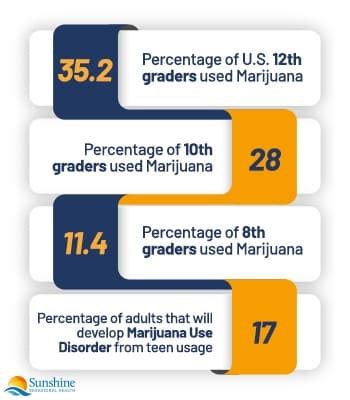
Research on cannabis use disorder is ongoing, with studies exploring the underlying mechanisms, risk factors, and treatment options. The development of cannabis-based medications, such as cannabidiol (CBD) and tetrahydrocannabinol (THC), has shown promise in reducing symptoms of cannabis use disorder.
Cannabis Use Disorder and Mental Health
The relationship between cannabis use disorder and mental health is complex, with cannabis use potentially contributing to the development of mental health conditions like depression, anxiety, and psychosis. Conversely, underlying mental health issues can also increase the risk of developing cannabis use disorder.Addressing mental health concerns, such as providing therapy or counseling, can be an essential component of treating cannabis use disorder. By acknowledging the interplay between cannabis use and mental health, healthcare professionals can develop comprehensive treatment plans that address the individual's overall well-being.
Cannabis Use Disorder and Relationships
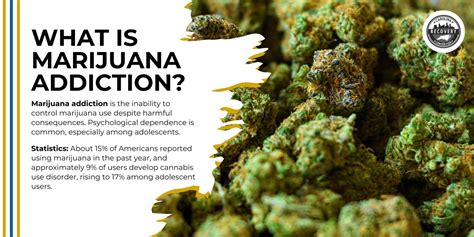
Supporting a loved one with cannabis use disorder requires empathy, understanding, and patience. Encouraging open communication, setting boundaries, and seeking professional help can aid in navigating the challenges associated with cannabis use disorder.
Cannabis Use Disorder and Workplace Implications
Cannabis use disorder can also have significant implications for the workplace, affecting productivity, job performance, and overall well-being. Employers can play a crucial role in addressing cannabis use disorder by providing education, support, and resources for employees struggling with the condition.Implementing workplace policies that address cannabis use, such as drug testing and employee assistance programs, can help identify and support individuals with cannabis use disorder. By promoting a culture of understanding and support, employers can foster a healthier and more productive work environment.
Cannabis Use Disorder Recovery and Support
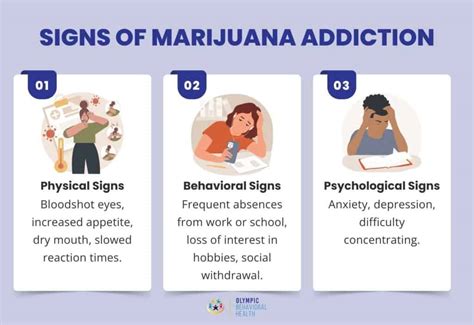
Practicing self-care activities, such as exercise, meditation, or creative pursuits, can help individuals manage stress and cravings, reducing the risk of relapse. By acknowledging the challenges and successes associated with recovery, individuals can develop a sense of pride and accomplishment, fostering a more positive and resilient mindset.
Cannabis Use Disorder Resources and Hotlines
For individuals struggling with cannabis use disorder, there are various resources and hotlines available, providing support, guidance, and connection to treatment services. The Substance Abuse and Mental Health Services Administration (SAMHSA) National Helpline (1-800-662-HELP (4357)) and the National Institute on Drug Abuse (NIDA) Hotline (1-800-662-HELP (4357)) offer confidential and free support for individuals seeking help with cannabis use disorder.Online resources, such as the National Alliance on Mental Illness (NAMI) and the American Psychological Association (APA), provide educational materials, support groups, and treatment locators, helping individuals navigate the recovery process.
What is cannabis use disorder?
+Cannabis use disorder is a recognized medical condition, characterized by the inability to stop or reduce cannabis use despite the negative consequences it may have on one's life.
What are the signs of cannabis use disorder?
+The signs of cannabis use disorder can include increased tolerance, withdrawal symptoms, using cannabis in larger amounts or over a longer period than intended, and neglecting important responsibilities or activities due to cannabis use.
How is cannabis use disorder treated?
+Treatment for cannabis use disorder often involves a combination of behavioral therapies, such as cognitive-behavioral therapy (CBT) and contingency management (CM), and medications like cannabis-based medications or non-cannabis medications.
Can cannabis use disorder be prevented?
+Preventing cannabis use disorder requires a comprehensive approach, involving education, awareness, and early intervention, as well as promoting healthy coping mechanisms and addressing underlying issues that may contribute to cannabis use disorder.
What resources are available for individuals struggling with cannabis use disorder?
+There are various resources and hotlines available, including the Substance Abuse and Mental Health Services Administration (SAMHSA) National Helpline and the National Institute on Drug Abuse (NIDA) Hotline, as well as online resources like the National Alliance on Mental Illness (NAMI) and the American Psychological Association (APA).
As we conclude our exploration of cannabis use disorder, it is essential to remember that recovery is possible, and support is available. By acknowledging the signs of cannabis use disorder, understanding its causes and treatment options, and promoting education and awareness, we can work towards creating a healthier and more supportive environment for individuals affected by this condition. We invite you to share your thoughts, experiences, or questions about cannabis use disorder in the comments below, and encourage you to share this article with others who may benefit from this information. Together, we can foster a more informed and compassionate community, supporting those affected by cannabis use disorder and promoting a path towards recovery and wellness.
